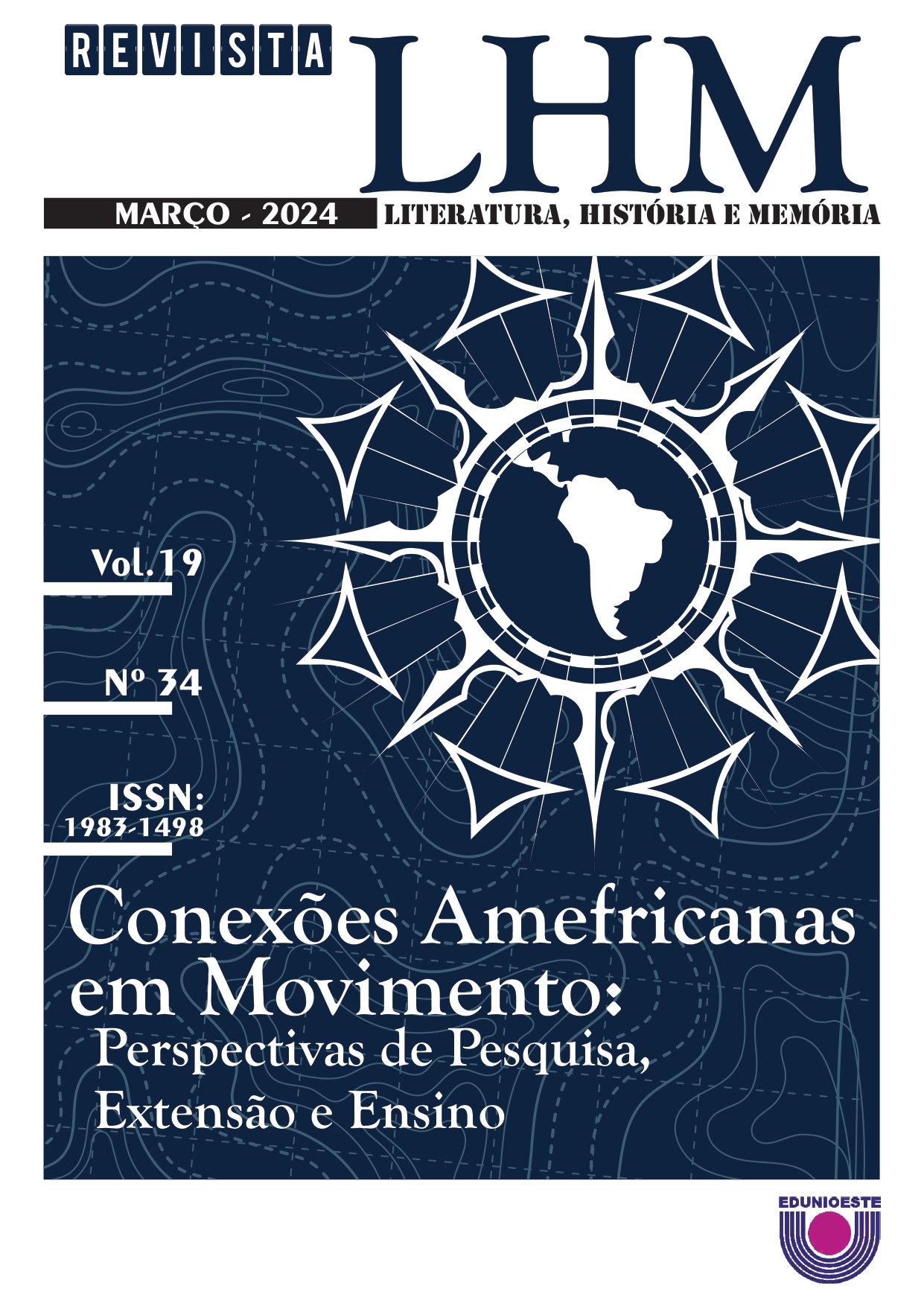Submissão Feminina no Romance A Vida em Flor de Dona Bêja a Partir da Personagem Maria
DOI:
https://doi.org/10.48075/rlhm.v19i34.31443Resumo
RESUMO: No romance escrito por Agripa Vasconcelos A vida em flor de Dona Bêja de 1957, que representa o ciclo do povoamento do estado de Minas Gerais no século XIX, Dona Beja é a figura feminina da história de Araxá que protagoniza o romance. Entretanto, essa pesquisa objetivou analisar as representações criadas sobre a mãe de Dona Beja, a personagem Maria, pois, a partir da sua participação no enredo do romance é possível repensar a situação feminina na sociedade patriarcal e perceber a tentativa de dominação masculina sobre as mulheres que se expressou a partir de diversas formas de violência. Desse modo, é possível afirmar, que a partir de uma ficção histórica, é possível repensar as desigualdades que foram sendo constituídas ao longo da história entre homens e mulheres.
Downloads
Publicado
Como Citar
Edição
Seção
Licença

Este trabalho está licenciado sob uma licença Creative Commons Attribution-NonCommercial-ShareAlike 4.0 International License.
Aviso de Direito Autoral Creative Commons
Política para Periódicos de Acesso Livre
Autores que publicam nesta revista concordam com os seguintes termos:
1. Autores mantém os direitos autorais e concedem à revista o direito de primeira publicação, com o trabalho simultaneamente licenciado sob a Licença Creative Commons Attribution que permite o compartilhamento do trabalho com reconhecimento da autoria e publicação inicial nesta revista.2. Autores têm autorização para assumir contratos adicionais separadamente, para distribuição não-exclusiva da versão do trabalho publicada nesta revista (ex.: publicar em repositório institucional ou como capítulo de livro), com reconhecimento de autoria e publicação inicial nesta revista.
3. Autores têm permissão e são estimulados a publicar e distribuir seu trabalho online (ex.: em repositórios institucionais ou na sua página pessoal) a qualquer ponto antes ou durante o processo editorial, já que isso pode gerar alterações produtivas, bem como aumentar o impacto e a citação do trabalho publicado (Veja O Efeito do Acesso Livre).
Licença Creative Commons
Esta obra está licenciada com uma Licença Creative Commons Atribuição-NãoComercial-CompartilhaIgual 4.0 Internacional, o que permite compartilhar, copiar, distribuir, exibir, reproduzir, a totalidade ou partes desde que não tenha objetivo comercial e sejam citados os autores e a fonte.


